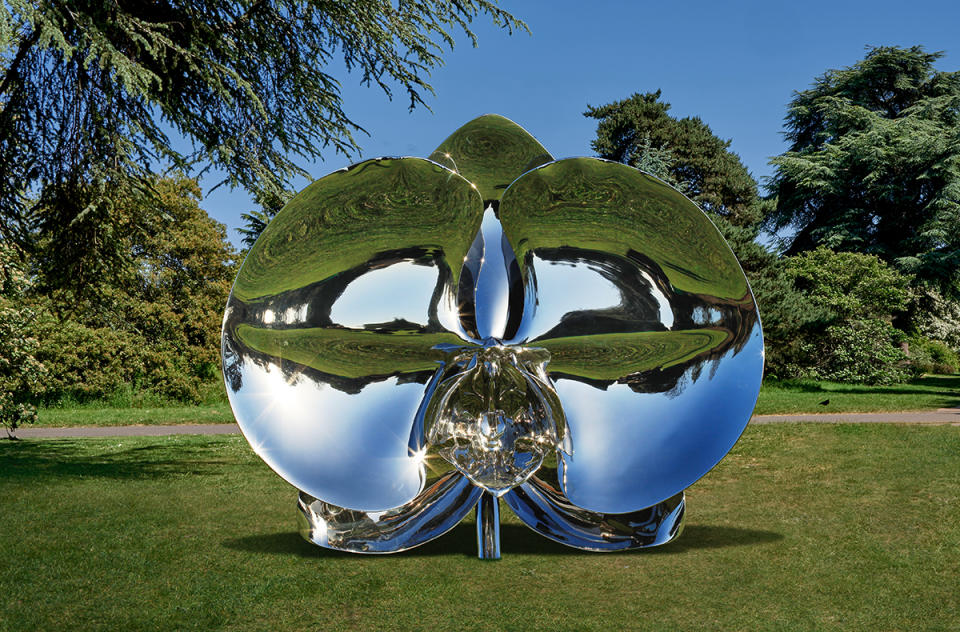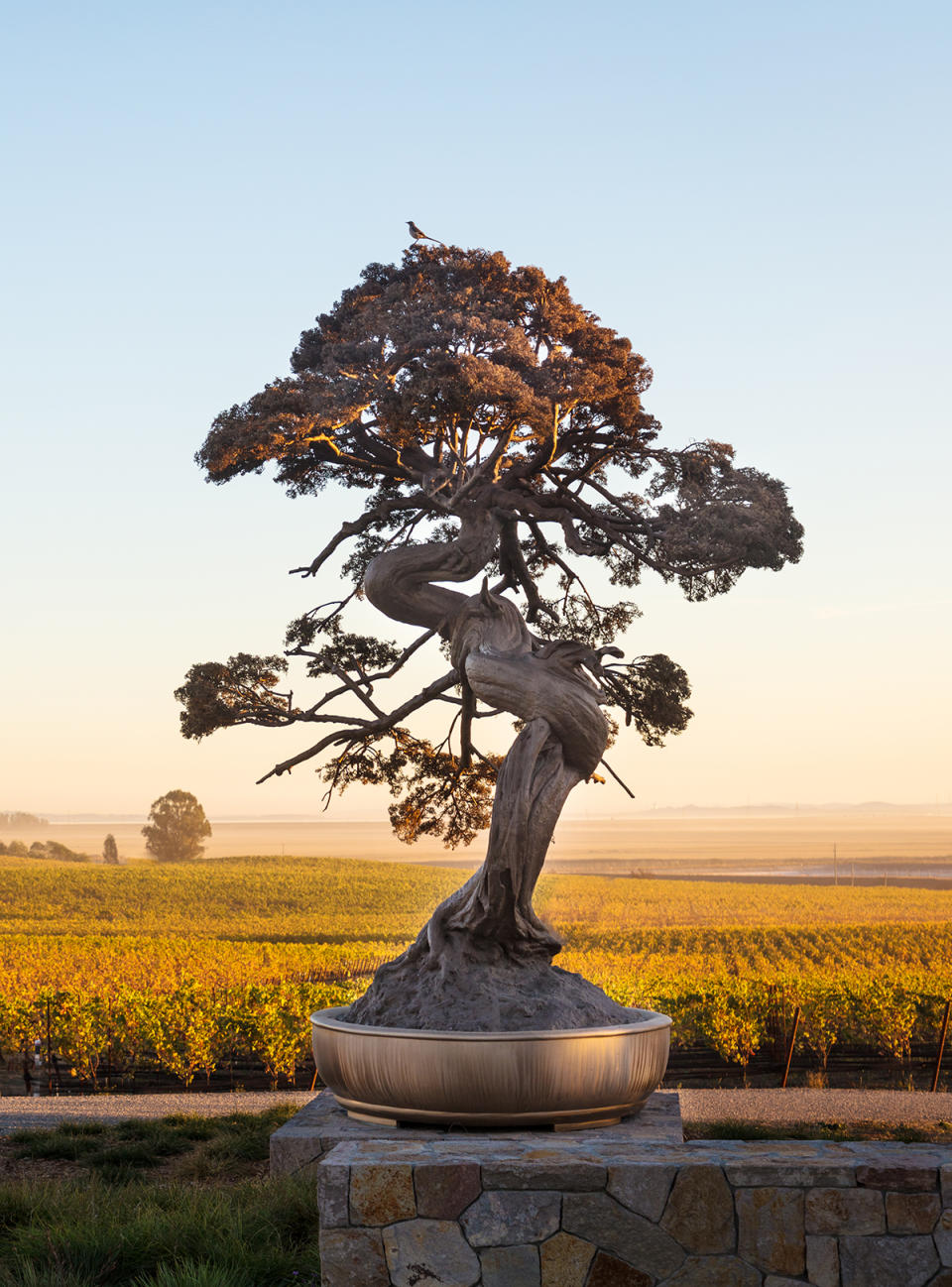British Artist Marc Quinn Has a New Show at London’s Kew Gardens. Here’s What to Expect

- Oops!Something went wrong.Please try again later.
During his prolific and inventive career, Marc Quinn has cast a self-portrait with his own frozen blood, preserved flowers in liquid silicone, and made a series of 3-D works by covering images of postcard-pretty sunsets with urban detritus and mounting them on violently crumpled aluminum. The through line? Our inextricable dependence on our environment, both natural and of our own making. Or, as Quinn puts it, “what it is to be a person in the world.”
“Those frozen sculptures bring out the idea that we only exist in certain conditions—and if you change those conditions, then we cease to exist,” Quinn says over Zoom from his London studio. “The frozen head only exists because it’s minus-20 Celsius. If you unplug it, it turns to a pool of blood. The frozen flowers, they only seem to be perfect because they’re frozen. If you unplug them, they turn to mush.”
More from Robb Report
This Philanthropist Just Donated His $300 Million Art Collection to Seattle University
Inside Arterton, a London Menswear Shop That You Can Leave With Everything But Clothes

Quinn first rose to prominence more than 30 years ago as part of the boundary-pushing Young British Artists and has exhibited widely in museums, galleries, and biennials. But his latest venue, London’s Kew Gardens—where Light Into Life will run from May 4 through September 29—offers what may be the ideal backdrop for his oeuvre: It’s neither wild nor a garden planted with purely aesthetic goals, but rather a carefully cultivated scientific institute.
“It’s one of the most biodiverse places in the world,” Quinn says, describing with awe the herbarium’s 14 million dried specimens and the species grown for cancer-treatment research, among other intriguing finds. His delight in learning there, for example, that flowers evolved to bloom in brilliant hues because insects had color vision—and not the other way around—is palpable.
The show will include 14 large-scale sculptures of orchids, palm leaves, and more—almost all of them new and installed outdoors—as well as an indoor gallery featuring a range of Quinn’s works that contemplate our links to nature, such as paintings of human and plant cells (which he viewed through Kew’s microscopes) and his somewhat eerie 2001 take on the Garden of Eden: a grid containing the DNA of 75 plants, a man, and a woman. “Maybe in 100 years’ time, someone will actually make the real garden with two real people in it,” he muses. In which case, he and his former wife might have another shot at eternity; it’s their DNA on the agar-jelly plates.
The showstoppers will likely be the vegetation-inspired sculptures, including two roughly 16-foot-tall bronzes of bonsai-style trees to be installed in a Victorian-era greenhouse. “The bonsai has been kept small by humans,” Quinn explains. “It’s all about human control of nature—it’s a microcosm of that. I’ve liberated them back to the size of the actual tree that they would have grown to.” But in a fitting exercise in irony, he has lavished the same degree of attention on his “trees,” casting each tiny leaf in bronze.

Several of the sculptures that will dot the grounds are made of polished stainless steel, capturing both the landscape and the viewer in their mirrorlike petals and fronds. Those distorted reflections will change perpetually with the weather, the hour, and the intermittent visitors. From the side, the pieces are just inches wide and potentially easy to miss—“I want them to be like these visible invisible things,” he says—but confronted head-on, they’re similar to the screens now ubiquitous in our lives. If they were alone in a white room, Quinn says, they’d be blank, but at Kew, time and location will bring them to life. “They’re very trippy and Alice in Wonderland in a way,” he adds.
That this event will occur in a public garden rather than an art institution is no coincidence: Quinn has long sought to break out of the white cube to reach a wider audience. Alison Lapper Pregnant (2005), for example—a monumental marble of an artist who, like the Louvre’s famed Venus de Milo, has no arm—challenged passersby in Trafalgar Square to reconsider disability and beauty.
“Art is really a minority interest,” he says. “Once you put things in the public realm, it becomes for everyone, which is really interesting. You get a whole different level of engagement and debate. Often, the people who walk down the street are underestimated. Some of the most interesting ideas come from people who aren’t in the art world.”
Best of Robb Report
Sign up for Robb Report's Newsletter. For the latest news, follow us on Facebook, Twitter, and Instagram.

